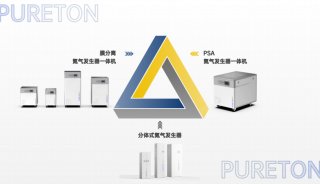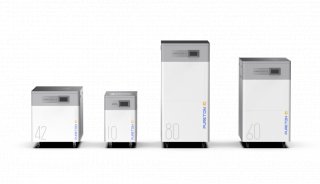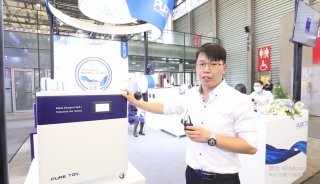General Cloning Protocols
Large Scale Preps: (See Large scale plsasmid prep protocol for more details)
Cultures: Inoculate a 5 mL LB/Amp (50 - 100 µg/mL) culture in early a.m. with a single colony. Use all 5 mL to inoculate a 500 mL LB/Amp culture in the evening. Alternatively the 5 mL culture can also be set up as an overnight culture.
Save 1 mL for a glycerol stock if necessary (see step 6c, below). Prepare remainder according to alkaline lysis PEG or CsCl/Qiagen protocol.
Measure and record A260/A280. Perform diagnostic digests on 0.1 µg of DNA, e.g. digests which will compare uncut, linearized, cut out insert, and cleaved insert. Alternatively, sequence the insert using vector primers which flank the cloninig site (e.g. T3, T7, or M13 primers)
For lab stocks record on each tube: Plasmid name, plasmid ID number (red ink), your initials, date of plasmid prep or lab book page number, DNA concentration.
Consider reprepping the DNA if the A260/A280 is less than 1.88, if their is any visible protein in the wells of the test gel.
For newly acquired or constructed plasmids:
Draw plasmid map using GCK software and print a copy for the lab notebook. Also record the plasmid name and location in the MPD database.
Store the plasmid at -20°C. In the lab plasmid box.
For commonly prepped or particularly valuable plasmids store a glycerol stock as follows: Add 200 µL of glycerol to 1 mL of an overnight culture of the bacteria and mix well. Store at -80°C and record the plasmid name, I.D. number, date and the strain of bacteria in the MPD's Freezer and Plasmid databases. This will speed up future plasmid preps and ensure that not all of the plasmid is used up.
Test digests
A typical restricion digest consists of: 0.1 µg of DNA + 1 µL of enzyme + 2 µL of 10x buffer (consult Roche or NEB list) and q.s. to 20 µL with H2O. Note that some NEB buffers also call for the addition of BSA. Digest for 2 hrs at the temperature recommended for the enzyme (usually 37ºC). (Longer digests are not advisable for miniprep DNA because it will increase the likelihood of degragradation of the DNA by exonucleases).
Test gels:
Load 0.1 µg DNA per lane. Use more DNA only if you need to visualize both very small and large fragments. Do not overload the wells as this will cause bands to smear. Add 4 µL of 10 mg/mL ethidium bromide per 100 mL of 0.5x TBE with the following concentrations of agarose:
Agarose conc. Size range 0.4% >10 kB 0.6% 6 to 10 kB 0.8% 0.5 to 7 kB 1% 0.2 to 1 kB 2% 0.1 to 0.3 kB acrylamide < 100 bp
Run the medium sized gel boxes at 100 v. for 90 min - 2 hrs. Run the small boxes at 80 v. To resolve very large fragments (>10 kB) load an equivalent of 20 ng per large fragment. Run at a reduced voltage (e.g. 50 v.) for 4 - 6 hours.
Preparative Digests
Note: If a digest will produce only a single fragment (e.g. a vector being cut with a single enzyme, or PCR product cut at their ends) then the DNA should be digested, phenol extracted and purified by EtOH precipitation. If the digest produces a product which must be purified away from a second fragment (e.g. insert removed from a vector) then the DNA should be digested, run on a prep gel, and then EtOH precipitated. Agarose gel electrophoresis has the disadvantage of reducing the cloning efficiency of DNA fragments.
Calculate the optimal reaction conditions to obtain 5 µg of DNA of the fragment of interest:
Amount of DNA = 5 µg x (size of fragment)/ (total plasmid size).
Use 10 units of enzyme per µg of plasmid DNA.
To ensure that the DNA is cut to completion it should be cut under dilute conditions:
5 µg of vector DNA + 50 U. enzyme + 50 µL 10x buffer, q.s. to 0.5 mL with H2O.
Digest for 90 min. at the optimal temp (usually 37ºC). Add more enzyme (again 10 U/µg) for another 90 minutes.
Pour two gels: A mini-test gel and a mid-sized prep gel. Use 10-tooth combs for the preparative gel. When the DNA is half way digested remove 0.1 µg for a test gel with 0.1 µg of uncut DNA.
If the test gel shows >90% digestion load 1/2 of the preparative sample into 3 - 5 lanes of the preparative gel. Run at <75 volts to mimimize smearing of the bands.
Photograph the prep gel when it is finished running. Indicate on the photo which band was cut out. If there are multiple bands photograph the gel after the band is removed.
Elute the DNA from the agarose gel. There are several protocols for doing this including elution onto glass fiber filters, elution into dialysis tubing, and use of an elution trap. (See Moleclular Cloning for more details). Precipitate the DNA with NaOAc and EtOH, wash with 70% EtOH, and resuspend in TE or H2O.
Quantify and record the estimated DNA concentration of the isolated gel fragment on a test gel with Lambda + HindIII size marker. Calculate the molar ratios of vector to insert.
DNA ligation
Typical reaction conditions for directional cloning ligation:
20 ng of vector
3-fold molar excess of insert
2 µL of ligase
20 µL reaction volume.
Ligate at 15°C for 2 hours to overnight.
For large or problematic cloning steps it may be informative to double the recipe so 1/2 of the sample can be run on a test gel and 1/2 can be used for bacterial transformation. In this case vector only and insert only ligation controls should also be performed in parallel (see Bacterial transformation, 4a, below). If the appropriate ligation products are not present on the test gel then the DNA may need to be repurified or the ligation conditions may need to be optimized (see Ligation Optimization protocol).
Bacterial transformation
Use highly competent cells for blunt ended cloning or very large constructs. Transform only 1/2 of the DNA into bacteria and incubate in 1 mL of LB for 30-60 min. (Save the remaining 1/2 of the ligation mixture to run on a gel to check the ligation competence of your fragments).
Blue/White selection: Evenly spread 120 µL X-gal/IPTG across plates > 1 hour before use. See Blue-White selection protocol for more details.
Plate 100 µL of bacteria at different dilutions in LB: 1/100, 1/10, 1x, and 10x (for the latter spin 1 mL of culture and resuspend in 0.1 mL LB).
Plate 100 µL of controls:
1 µL unligated vector fragment,
1 µL unligated insert fragment,
0.1 ng of uncut pBS. Record the plating efficiency (# colonies pBS x 105 /µg pBS)
Pick individual colonies and restreak them onto LB/Amp plates and simultaneously innoculate LB/Amp 5 mL broth cultures for minipreps.
DNA minipreps
Grow 28 overnight cultures each in 5 mL of LB/Amp broth.
Miniprep 1.5 mL of bacteria with an alkaline lysis protocol with RNAse and 1 phenol or chloroform extraction followed by 1 ethanol precipitation with 2x 70% EtOH washes. Alternatively, use a Qiagen mini-prep kit.
Resuspend miniprep in 50 µL of T.E. Use 3 µL per diagnostic digest. Pour 2 medium test gels each with two 15-tooth combs. Run test gels with both uncut and cut DNA. If miniprep digests fail to find inserts you may use the perform colony hybridization on bacteria plates with 100 - 500 colonies.
Confirm orientation and secondary cut sites of insert of the relevant minipreps. Sequence all PCR cloned and blunt ligated fragments from both directions to confirm that no mutations have been introduced. For PCR cloned fragments it is important to sequence the entire insert region to rule out point mutations.
Repeat digests with more enzyme if there is evidence of partial digestion. The presence or RNA (usually seen at the bottom of the gel) may also inhibit DNA digestion. It may be necessary to repeat minipreps if the DNA is significantly smeary, degraded, contaminated with RNA, or contaminated by protein (material stuck in the wells of the gel)

























